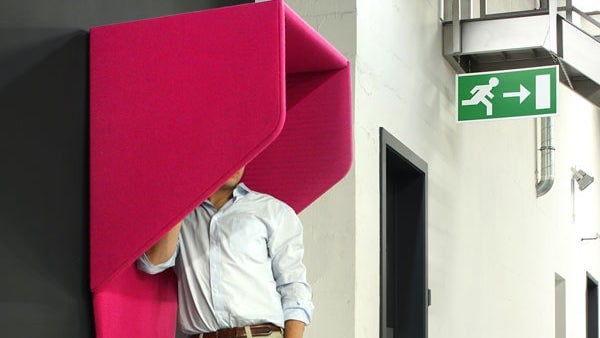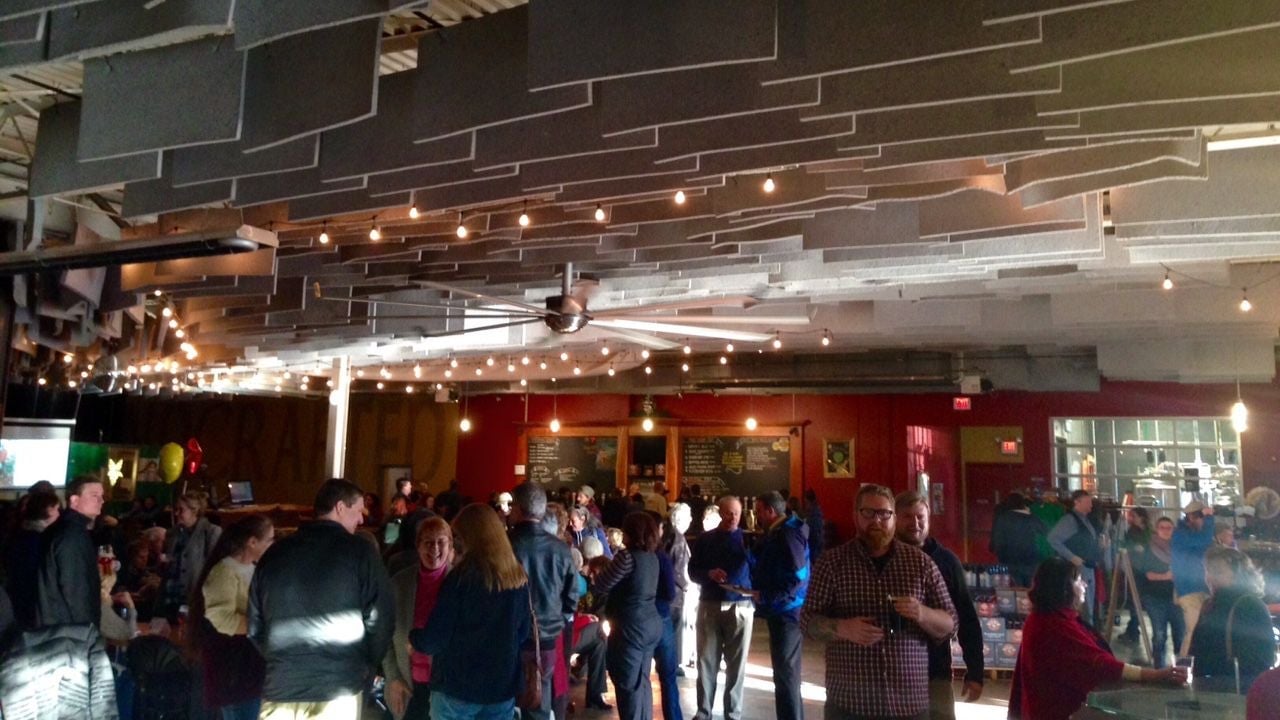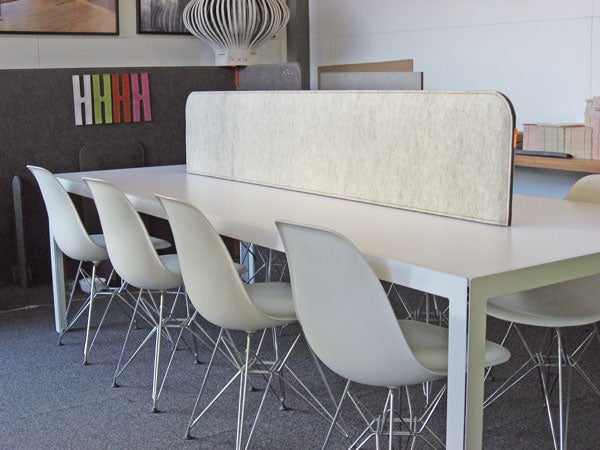Thanks to the open office, there’s a booming market for fancy noise-absorbing objects
On the ceiling of Airbnb’s San Francisco office hang a series of banners set two feet apart and made out of recycled cotton. They’re not made to be decorative. They’re there to absorb noise.


On the ceiling of Airbnb’s San Francisco office hang a series of banners set two feet apart and made out of recycled cotton. They’re not made to be decorative. They’re there to absorb noise.
“Sound modulation is a big deal around here,” says Aaron Taylor Harvey, the head of Airbnb’s internal architecture and interior design group.
Offices with glass walls, large open spaces, and urban locations are in style, especially among technology companies like Airbnb, meant to spur collaboration and facilitate communication. They’re also a recipe for noise. Designers like Harvey fighting that noise with smart design and an increasingly diverse, creative selection of sound-absorbing objects.
In addition to the sound-absorbing ceiling banners, Harvey’s team wraps surfaces with sound-absorbing panels that look like fabric wallpaper, and strategically placed sound-absorbing walls to separate areas of noisy collaboration from those with quiet focus. “If you’re 15 people in a 20,000 square foot warehouse somewhere, you just need to make sure the desks are right distance from each other” says Harvey. Unfortunately, that’s not possible for many Airbnb offices which are located in urban areas. Instead, Harvey has to find creative ways to dampen sound.

Workplaces have been noisy prior to the arrival of the loft-as-workspace. Open pits of secretaries tapped on loud typewriters throughout much of the 20th century, and in some manufacturing settings reducing the decibel level is a actually a safety issue. Even the cubicle had its noisy aspects. “You weren’t hearing the person next to you directly,” says John Calder, the head of marketing at Acoustical Surfaces, a company that makes noise-absorbing materials, “but you would hear them bouncing off the ceiling really clearly.”
Unlike typing pools and cubicle farms, today’s trendy urban and open offices are often also branding projects for companies looking to attract talent–so much so that one of Airbnb’s offices in Seattle, won a Cannes Silver Lion award for design in 2015.
To meet new design and aesthetic demands, companies that make sound absorbers have evolved their products. “Thirty or 20 years ago, it was simple: you can put fiberglass on the walls. It didn’t look great, there were just panels with fabric around them,” says Calder. Acoustical Surfaces, which also supplies restaurants, recording studios, and a variety of other businesses with noise-control products, has since developed materials like the banners that hang from Airbnb’s ceilings. Made with recycled denim, they’re ideal for companies, like Airbnb, that want to be environmentally friendly. (Other companies make panels from, for instance, recycled newspapers).
Acoustical Surfaces now also makes sound-absorption panels that look like wood, and sound-permeable paint that can help disguise a panel as a piece of art. They deal with a lot of designers who want a particular theme or a different look, Calder says. “So we don’t ignore the aesthetics.”
Another company, called Buzzispace, builds sound absorption into lamps, furniture, and room dividers. CEO Tom Van Dessel says that the company’s founder, Steve Symons, first saw a need for fancy sound absorbers among designers who were renovating old warehouses into homes. The resulting apartments had a lot of exposed brick and glass, which made for beautiful but very loud spaces. “He would say, what I know about acoustics is carpet and drapes can do the trick,” Van Dessel says. “But none of these things were meeting the design aesthetics these people were going for”

Buzzispace’s first solution was to create movable walls, wall paper, and a cube-shaped ottoman that were designed to absorb sound, but blended into the space. They never took off in homes, but office designers adopted them. The company’s sales over the last five years have grown between 30% and 50% each year, and the between 80% and 90% of Buzzispace customers are now offices, Van Dessel says the products have particularly taken off with technology companies on the West coast.
Harvey’s other challenge, along with sound absorption, is helping companies creating privacy without disturbing interaction. The rise of the cubicle left workers feeling distant from colleagues, and yearning a way to connect and now “the pendulum has swung wildly the other way and it’s all collaboration and people on top of each other, and people are desperate for some sort of privacy or separation.”
Both cubicles and open plans are extreme solutions to building a workable office setting. Harvey says that people really need an opportunity to find private space and focus space within an open office environment that facilitates easy connection to others.
Even so, for many office workers currently barricaded behind headphones, a mere reduction in cacophony wouldn’t hurt.